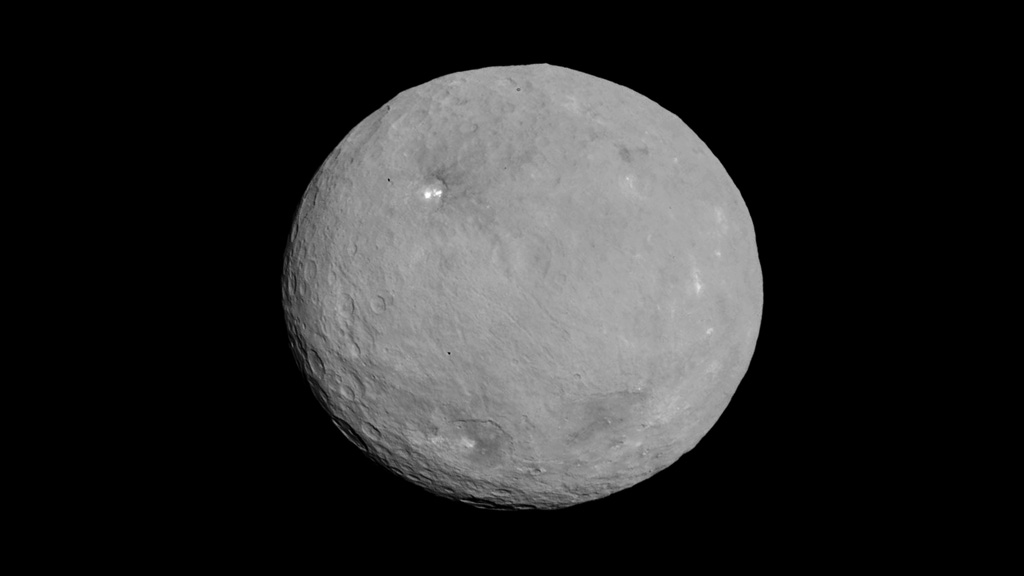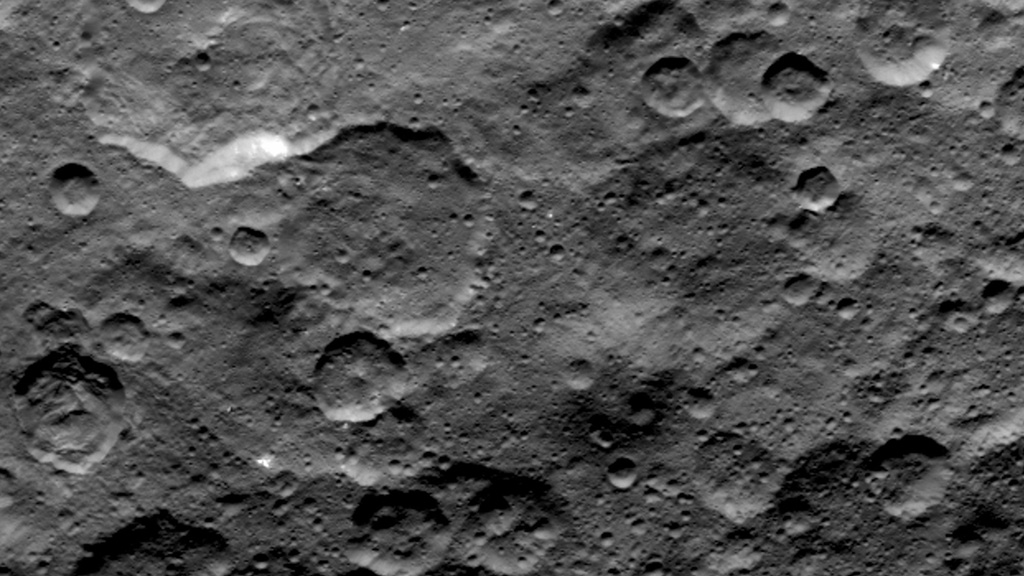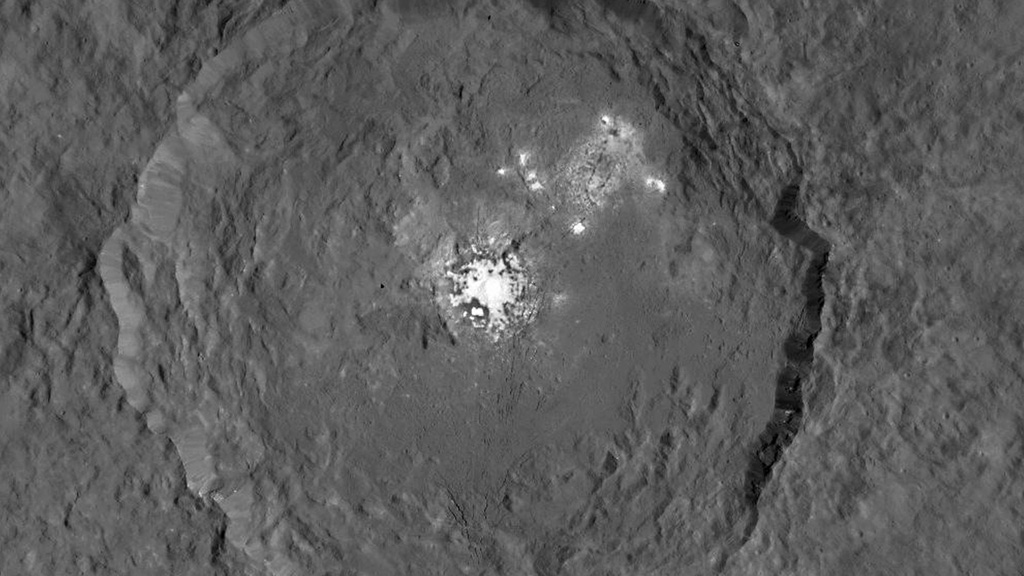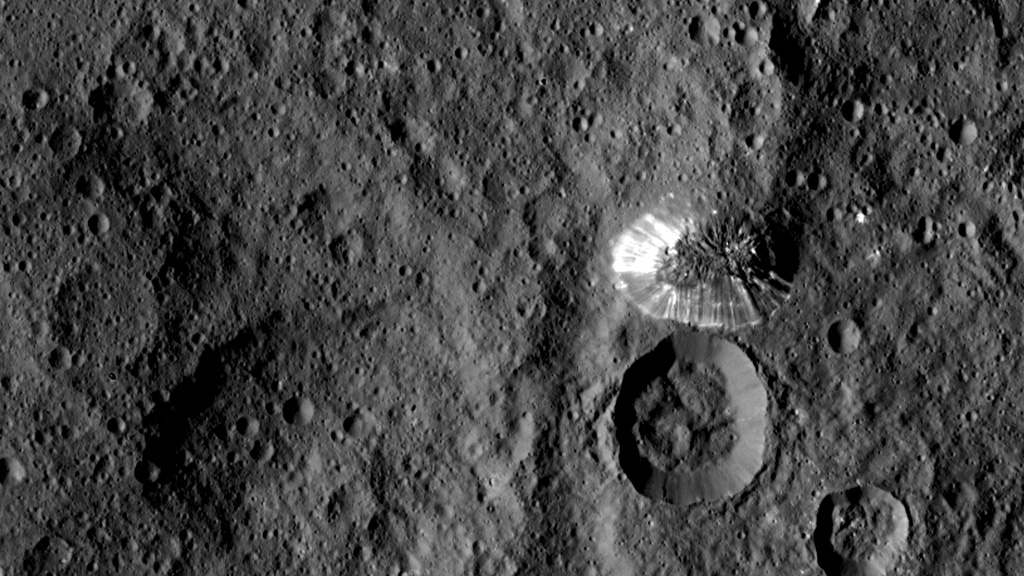Planets and Moons
ID: 12085

Ceres isn't your average space rock. At 587 miles across, it's the biggest object in the solar system’s main asteroid belt—a swarm of thousands of rocky bodies between Mars and Jupiter—and the only dwarf planet. Before the arrival of NASA’s Dawn spacecraft at Ceres in March 2015, scientists knew little about this rocky and icy world. Surveys using instruments aboard Dawn have helped scientists explore features of its interior and thin, outer crust. Now, new evidence indicates that Ceres' surface is predominantly clays contaminated with ammonium, and that this material may have originated from beyond Jupiter. This discovery is changing how scientists think about the migration and mixing of material early in our solar system’s history. Despite these findings, many mysteries remain, including the makeup of Ceres' striking bright regions. An analysis of measurements made by the spacecraft will reveal their true nature. Watch the video to take a flyover tour of Ceres.



A Tour of Ceres




Story Credits
Please give credit for this item to:
NASA's Goddard Space Flight Center
Video courtesy of NASA/JPL-Caltech
Images courtesy of NASA/JPL-Caltech/UCLA/MPS/DLR/IDA
NASA's Goddard Space Flight Center
Video courtesy of NASA/JPL-Caltech
Images courtesy of NASA/JPL-Caltech/UCLA/MPS/DLR/IDA
Short URL to share this page:
https://svs.gsfc.nasa.gov/12085
Keywords:
SVS >> App
NASA Science >> Planets and Moons
https://svs.gsfc.nasa.gov/12085
Keywords:
SVS >> App
NASA Science >> Planets and Moons







